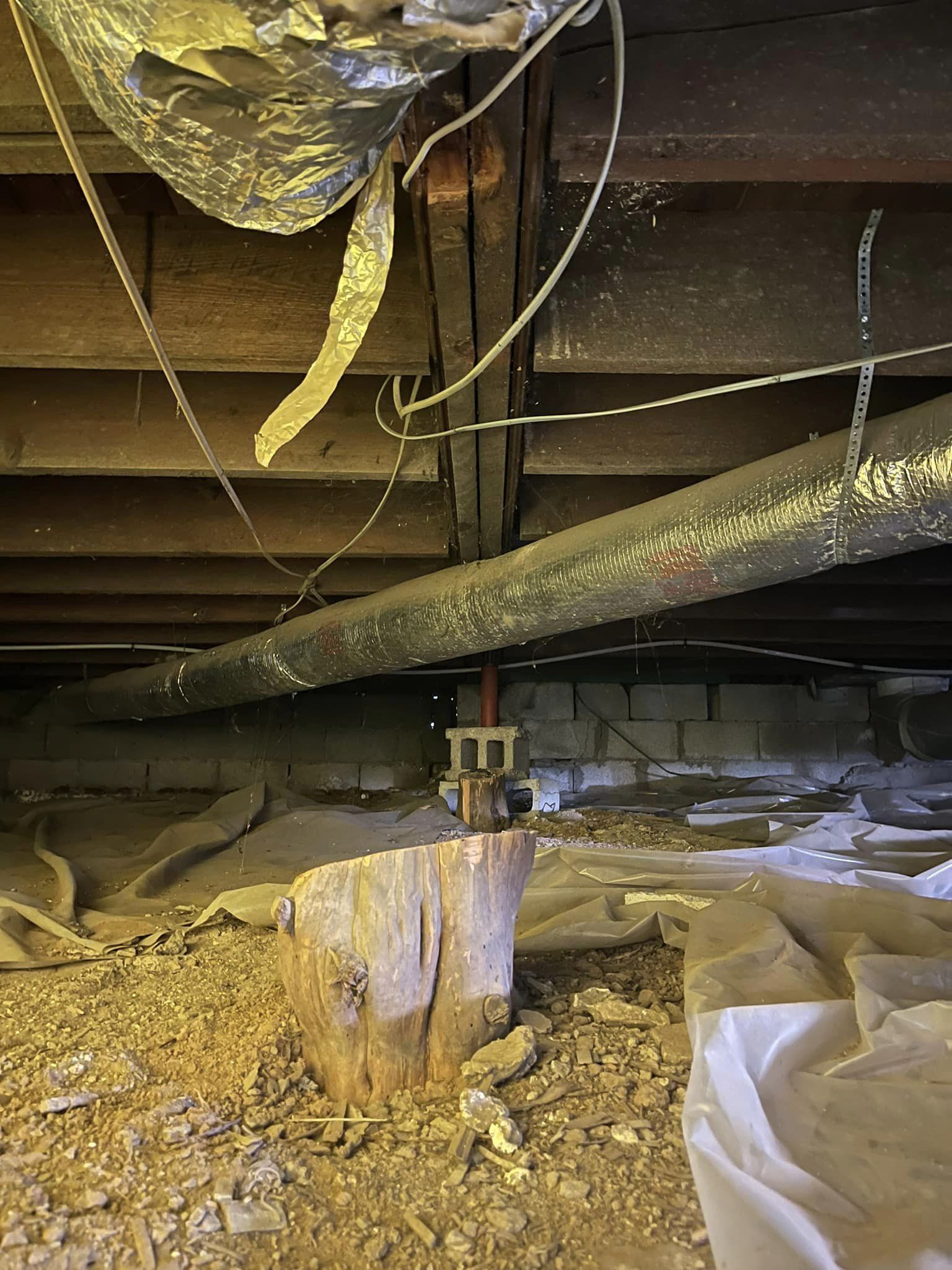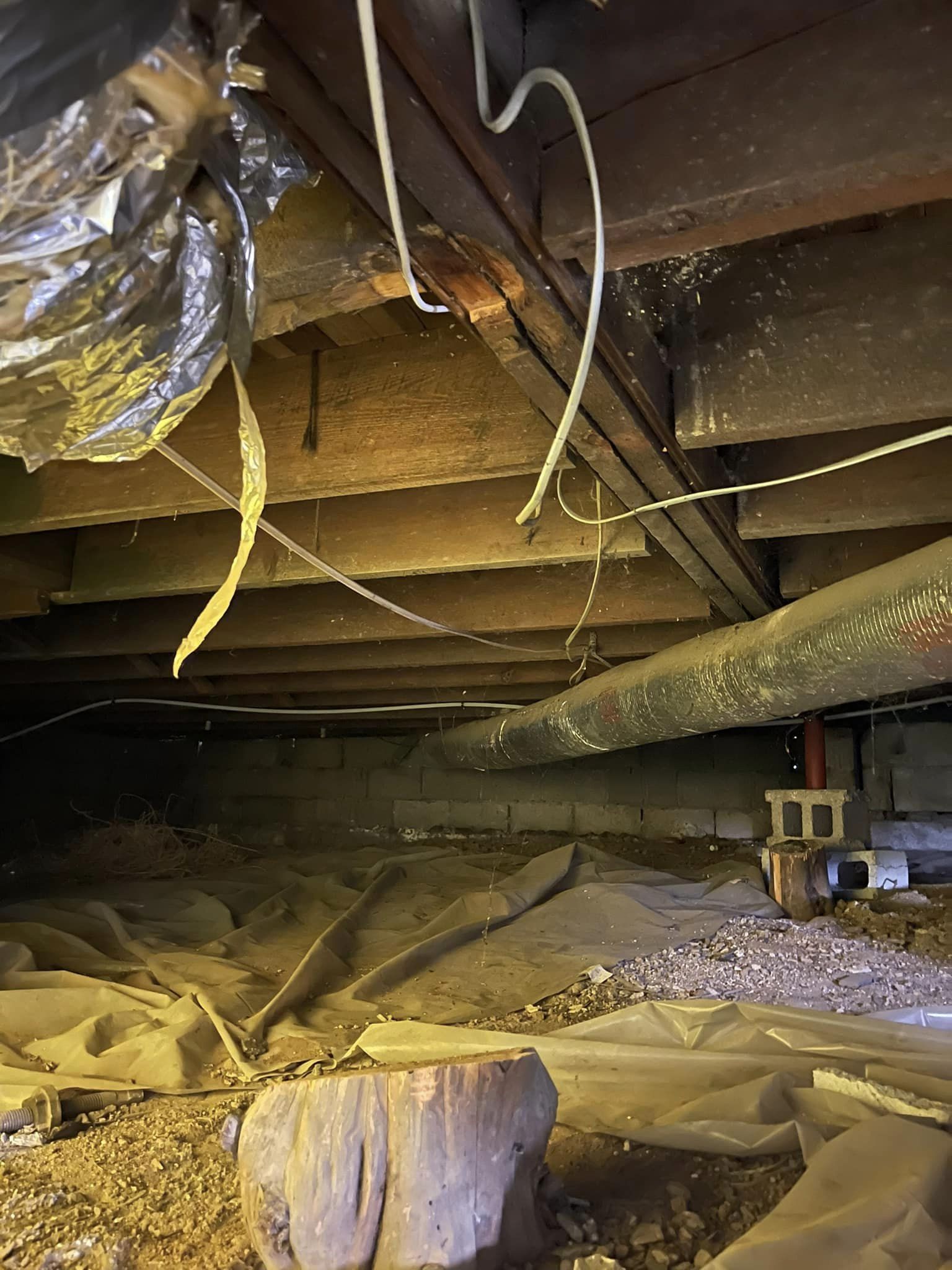How can I best reinforce the main girder of my 1899 home and prevent further floor sag using metal tubular jack posts and 6×6 beams?
I’m looking for advice on reinforcing the main girder of our 1899 home. It’s pretty sturdy – no wobbling floors, but it’s clear they’ve settled over time. I want to strengthen the crawl space to prevent any potential sagging.
I’ve purchased a dozen metal jack posts to reinforce the perimeter by connecting them to a gluelam.
The main girder needs a more durable solution. One of the main supports is missing (see photo) and the jack currently in place looks like it’s been there since the 70s. There are a few other jacks scattered around the crawl space that have fallen. So I need to secure things better.
I’ve included three photos of the girder in question and a picture from Ellis’ website showing a screw jack setup. Can I attach the short vertical 6×6 post directly to the home’s girder, rather than a gluelam like in the photo? It seems like that would be a stronger connection, as the beam would run parallel to the existing girder. My plan is to install three of these jack/6×6 beam combinations within a 12-foot span to evenly distribute the load.




After a little digging for a foundation, hand pour a pad and install a lally column.
In the context of building a country home, let’s assume that it is located in an area without a frost line.
When building a country home, how would you secure the top of the Lally column to the girder?
Metal plates are attached to the columns and can be raised and lowered using threads on the pole. They should be raised until they are snug against the girder. If you are in an area with a frost line, make sure to dig below the frost line before pouring a square pad like 12*12 inches. It may be difficult to dig under the house, but it is worth it for peace of mind.
At Country Home Building, we have approximately 48 inches of space to work with, so the crawl space isn’t too tight. I have some 1-inch steel plates measuring 14×14 inches that I plan to use as the base for jack posts around the perimeter. Would using these plates as a base for girder support be feasible, instead of digging a hole and pouring concrete for a footer?
You don’t have to fasten the lally column to the girder mechanically. The vertical forces are supported by the threaded rod once the column is raised, providing adequate stability.
Consider using a precast footing and a post jack. I did this method some time ago, it passed inspection and worked really well for the crawl space.
Hey Jesse, can you give me advice on how to attach the post or jack to the girder?
Consider using a post cap similar to the one shown in the image. When lifting a house, it’s best to only raise it about 1/4 inch per day to prevent damage. For precise advice, consult a structural engineer.
The brackets I used have holes in the top for lag bolts. As long as the house is sturdy, you don’t need to worry about side-to-side movement. The post wasn’t originally needed for that part of the house’s structure, but it adds extra support. Attaching it with lag screws or a strong tie should be sufficient.
The foundation is good, but keep in mind it’s from 1899. My plan is to stabilize it, not necessarily raise it. However, the floors have noticeably sloped in certain areas. Do you think it’s a good idea to slowly adjust them over time?
Hey , could you send some photos?
Here’s a photo from that project where I had to add support for 3 joists under the kitchen. I ended up sistering up the floor joists, creating a short beam, and lagging the post jack in place.
Hey Matt, just add some support where it’s sagging and then gradually jack it up a bit at a time. If it’s not urgent, I’d recommend doing it every couple of months until it’s level. I recently had to replace the sill plate on a project and I carefully lifted it about an inch and a half without any problems. The final result will be influenced by the overall condition of the structure.
Thanks a lot
‘s lally column brackets are designed to be placed over the top, and they come in various widths to accommodate different beam sizes.
Your home has evolved into its current state over the past century. Rushing through repairs could result in cracked walls, ceilings, binding windows, misaligned woodwork, and other issues. Consult a structural engineer to determine what steps are needed to square things up. It’s likely you’ll need to add piers and columns as you adjust the house back into alignment. Proceed slowly, allowing the structure to adjust to its new position. The number of piers required will vary based on soil conditions, which a structural engineer can help determine. Keep in mind that this process can be costly. Best of luck.
James, we’re planning to renovate the house in 2024. I want to focus on making sure the structure is sturdy and won’t shift in the future. If any issues like cracking plaster occur due to lifting the floor, I’d prefer to address them now rather than after the renovations are finished.
I suggest starting with cement post pads to position the screw jacks correctly. In the past, using bottle jacks to support foundations that were starting to sag was common practice. These jacks can help provide temporary support while you install the more permanent screw jacks. I have vivid memories of my Dad using bottle jacks to prevent main joists from sagging and getting frustrated when the next owner abandoned the house after we moved. It was a challenge to convince him not to retrieve all his bottle jacks from under that house!
Around 100 years old, this may have been previously renovated. It appears that two 2 by 10s have been reinforced with plywood on each side, rather than using a single large beam as would have been done a century ago. Start by examining the post in the background with the cement block, as it is likely to fail first in case of any issues. An empty block offers minimal resistance to direct pressure, so investigate the reasoning behind this setup. When considering adding a post, the approach will depend on the frost line. If there isn’t one, dig and pour a footing then install a post with a bracket like the one in the photo. However, in frost-prone areas, doing this incorrectly could cause more harm than good.
Has no frost. We’re down south. I’m trying to finish up all my homework before making any changes. Not sure what the previous owners were thinking with those blocks and jacks in the background – they even laid some blocks sideways. I believe they placed around 8 of these around the house and 6 have already fallen. The previous owner really neglected maintenance. Want to make sure I do things correctly. Thanks for the help.
I’d suggest adding a footer, using a 2×6 for a top plate, and getting the right size screw jack instead of relying on 6×6 posts
When using posts, consider aligning one side with the outside stringers and securing it with a metal bracket, then reinforce the structure with a 2×4 to ensure stability.
Are the 6×6 posts stronger, or can they carry more weight when distributed?
I’m not certain about the weight rating when comparing a 6×6. A 6×6 would have more surface area, but the length could be an issue when trying to use those brackets. If your 6×6 blocks are as short as they appear in the picture, then it should be okay. However, with 2 pivot points, any length on those posts could cause it to shift. A jack, on the other hand, only has 1 point so the entire jack would need to shift.
I was thinking about getting those jack screws from Ellis and setting up something similar. I would have a 6×6 going vertically (about 18-24 inches) with a gluelam top beam running along the existing girder. I planned to extend the lam 12 feet with 3 jacks spaced evenly.
In my opinion, it’s best to consult with an architect or engineer to determine the placement and depth of footers for your structure. DIYing the design of structural elements is not recommended.
We did something similar years ago when we restored a house. I dug two significant holes in the lower ground, each at least 16″ deep and 12″-16″ in diameter (or square). These holes were evenly spaced along the beam’s length to distribute the load to two points instead of one. Then, I purchased multiple bags of cement, making sure it wasn’t too runny and stuck to the shovel at a 45-degree angle. (Note: This required 8-10+ bags of cement, based on the compaction process. I suggest working on one hole at a time to practice your methods and timing.) I cut, installed, and wired around 4-8 pieces of 12″ rebar in a square pattern for every 3″ of depth (they should resemble squares or a tic-tac-toe pattern). The cement was poured, and I used a concrete vibrator/compactor (available for rent) to compact it to a greater density. The concrete was finished at ground level, though I recommend leaving it approximately 1″-2″ higher. Allow it to set for 28-30 days to reach maximum strength before loading any weight on it. Once set, place steel jacking posts under the beam and adjust the support tension as needed. Be cautious as excessive tension may cause cracks in the upper floor walls. Apply enough tension to prevent the beam from deflecting any lower, adjusting as necessary. Exercise extreme caution when working under the house; use proper safety practices and equipment. Best of luck. 🙂
‘t go about it that way… I felt sorry for him. He had good intentions, but could use some direction.
Plot twist – it’s set up as a ledger board configuration
No content
No content